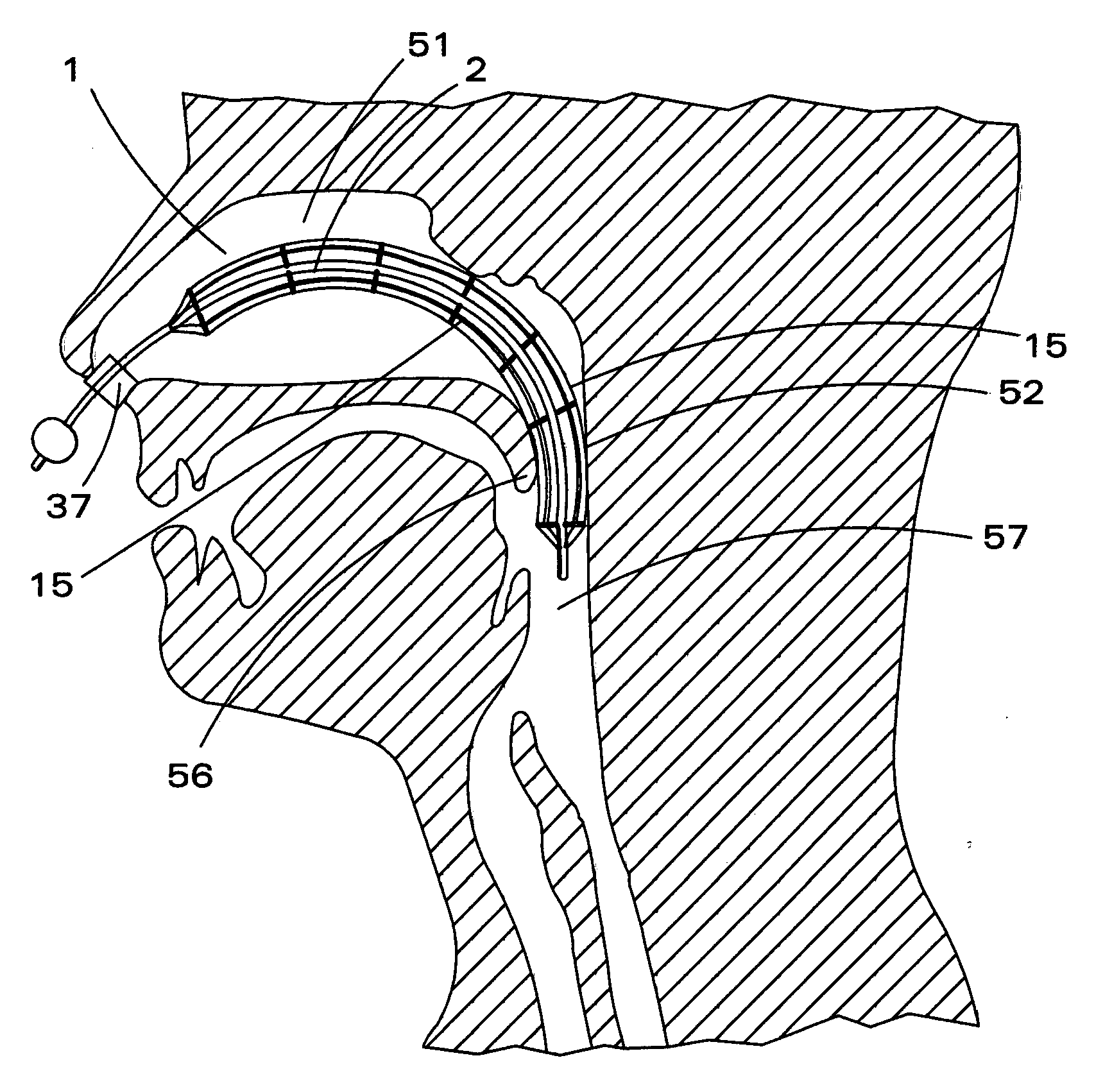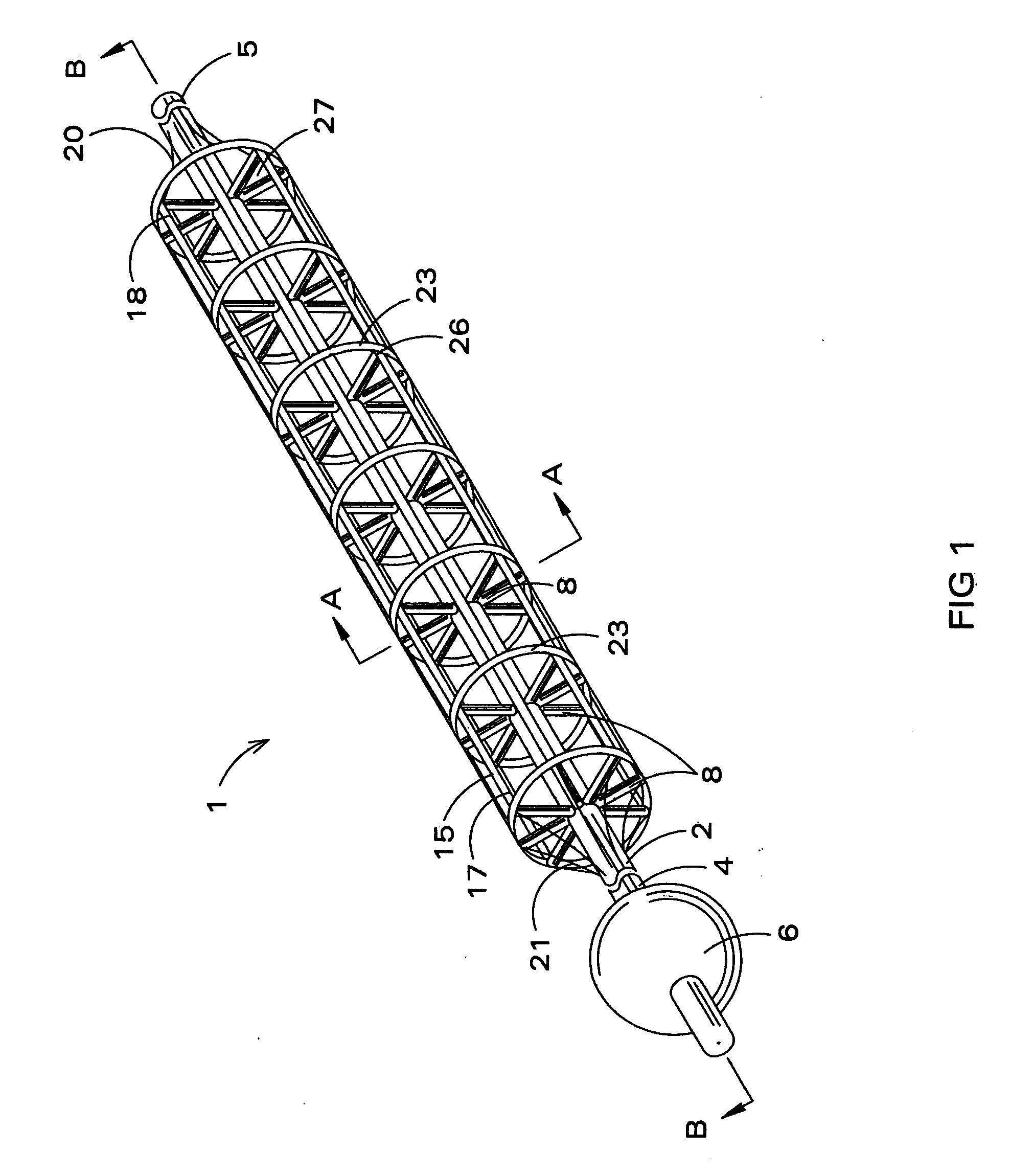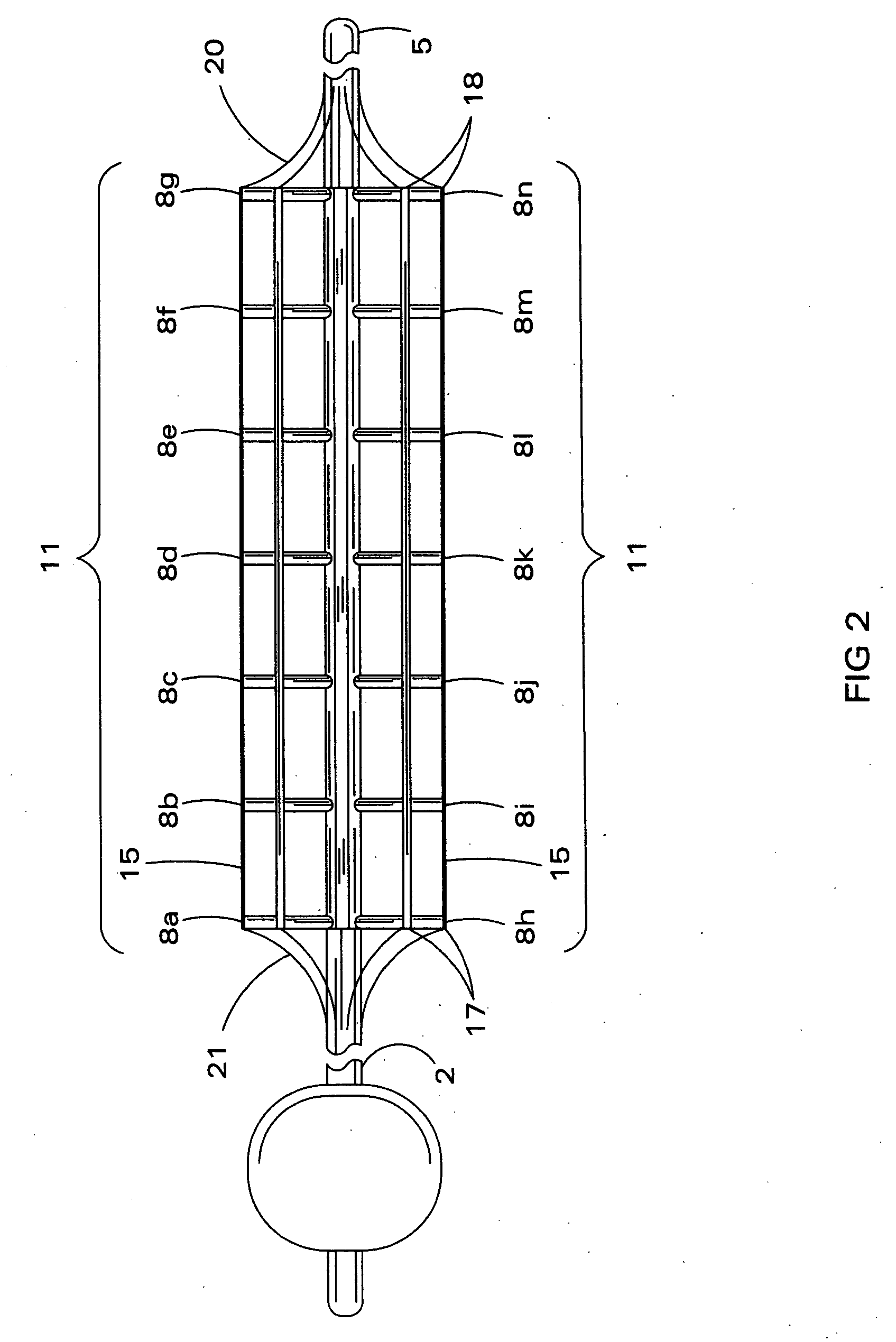Inflatable nasopharyngeal stent
a nasopharyngeal stent, inflatable technology, applied in the field of inflatable nasopharyngeal stent, can solve the problems of obstructive sleep apnea patients who receive sedation, analgesia or anesthesia for diagnostic or therapeutic procedures, drop in blood oxygen level, and increased risk of perioperative complications
- Summary
- Abstract
- Description
- Claims
- Application Information
AI Technical Summary
Benefits of technology
Problems solved by technology
Method used
Image
Examples
Embodiment Construction
[0029]The present invention relates to an inflatable nasopharyngeal stent and method of using same. In its un-inflated state, the stent is insertable into the nasal passageway via one of the nares. Once fully inserted and positioned, the stent is inflated. Inflating the stent causes radial spokes bearing perimeter ribs to expand outwardly from the stent such that the ribs and their adjoining web members press against the tissues of the nasopharyngeal cavity that define the patient airway. The pressing force from the stent restricts tissue swelling, incursion or motility and therefore prevents the nasopharyngeal structures from collapsing or intruding into the airway. Inter-spoke spaces allow the flow of air along the length of the stent and result in airway patency.
[0030]A preferred embodiment present invention nasopharyngeal stent is shown in the inflated state in FIGS. 1-5. Stent 1 comprises central tube 2 having lumen 3. Central tube 2 is made from a biocompatible material that i...
PUM
 Login to View More
Login to View More Abstract
Description
Claims
Application Information
 Login to View More
Login to View More - R&D
- Intellectual Property
- Life Sciences
- Materials
- Tech Scout
- Unparalleled Data Quality
- Higher Quality Content
- 60% Fewer Hallucinations
Browse by: Latest US Patents, China's latest patents, Technical Efficacy Thesaurus, Application Domain, Technology Topic, Popular Technical Reports.
© 2025 PatSnap. All rights reserved.Legal|Privacy policy|Modern Slavery Act Transparency Statement|Sitemap|About US| Contact US: help@patsnap.com



